Last updated on April 21, 2024

Primalcrux | Illustration by Wayne Reynolds
I have to be honest with you, folks. Lorwyn block is one of my largest knowledge gaps when it comes to familiarity with Magic sets. I’ve always loved the aesthetic, but I’ve never really sat down and engaged with everything the block has to offer. So I jumped at the opportunity to write about chroma, both to help you understand how it works and to cover some new territory for myself!
As a lover of Theros and the devotion mechanic, I’m excited to chat about the proto-mechanic that inspired it. And as it turns out, no, they’re not exactly the same!
Well, don’t keep me waiting. Let’s get to it.
How Does Chroma Work?

Heartlash Cinder | Illustration by Steve Prescott
Chroma is an ability word that counts the number of colored mana symbols on the cards in a certain zone. For the most part, chroma cards are mono-colored payoffs that reward you for playing cards with color-intensive mana costs. It works a lot like devotion, though we’ll discuss how they’re different later on. Since chroma is an ability keyword, each individual chroma effect is different, and the rules text of the chroma card tells you what happens.
The History of Chroma in MTG
Chroma was introduced in 2008’s Eventide, the final entry in the 4-set Lorwyn block. It appeared on nine cards across all five colors and has yet to be reused outside Eventide. While Lorwyn and Morningtide were heavily focused on creature types and typal support, the much less friendly Shadowmoor and Eventide shifted gears towards color-matters themes. Chroma was one of the many ways Eventide played into the mono-colored decks available in the set.
Is Chroma an Additional Cost?
Chroma isn’t an additional cost. It could theoretically change the amount of mana needed to cast a spell, but none of the chroma cards that exist have abilities like this. Note that a card like Phosphorescent Feast reveals cards as part of a resolution of the spell, not as an additional cost to cast that spell.
Is Chroma an Activated Ability?
Fiery Bombardment is the only instance of chroma being used as an activated ability. Chroma itself is neither inherently an activated nor triggered ability, but its flexible nature means it can be used in different ways. Remember, chroma is just a reminder word that ties together effects that care about the colored mana pips on your cards, it doesn’t carry any other rules text.
Devotion vs. Chroma
Devotion looks like a direct copy of chroma, but there’s a key difference. Whereas chroma can count mana symbols on cards in any zone, devotion only ever counts the mana symbols among permanents you control on the battlefield. Heartlash Cinder could be rewritten with devotion instead of chroma, but Umbra Stalker could not, because devotion can’t check the mana symbols on cards in your graveyard.
Devotion first appeared in 2013’s Theros and has been used multiple times since. It’s likely the preferred version over chroma, and it plays more thematically with deities and gods and such. However, chroma can be used in ways that devotion can’t, so there’s a slim chance we see it pop up again in the future.
Do Hybrid Mana Symbols Count?
A hybrid mana symbol in the cost of a card count exactly once towards a chroma card that checks for one of its colors. The means is +1 for a blue or green chroma card, the same way it would be +1 to your blue and/or green devotion count. For example, Sanity Grinding counts 3 blue mana symbols in the cost for Toluz, Clever Conductor.
What About Phyrexian Mana?
Phyrexian mana symbols count as the color of their corresponding symbol. p/ is functionally the same as for the purposes of counting for chroma. For example, Umbra Stalker gets +2/+2 from a Dismember in your graveyard.
Gallery and List of Chroma Cards
- Fiery Bombardment
- Heartlash Cinder
- Light from Within
- Outrage Shaman
- Phosphorescent Feast
- Primalcrux
- Sanity Grinding
- Springjack Shepherd
- Umbra Stalker
Best Chroma Cards
#3. Sanity Grinding
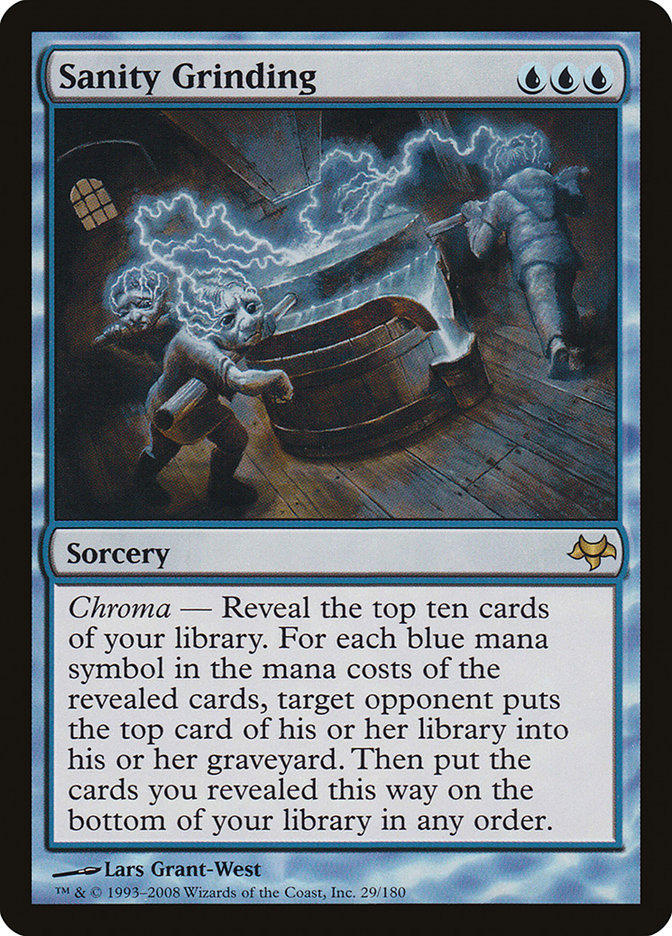
I was hoping for some standout chroma cards to surprise me, but they’re largely overcosted effects that are trumped by more recent devotion cards. Sanity Grinding caught my attention, though if it were that good I’m sure I would’ve heard of it before. The idea is to construct a deck with -heavy mana costs like Blue Sun's Zenith and Demilich and just hope you spike enough blue pips for a large mill effect. You could also just play Tasha's Hideous Laughter or Fractured Sanity, or better yet, run them all together.
#2. Primalcrux
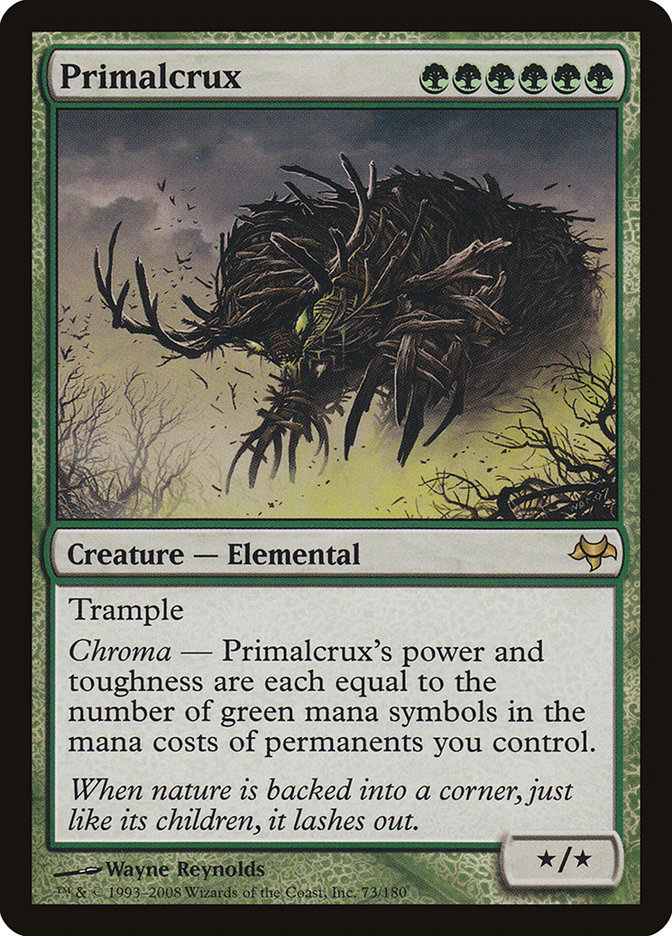
I used to think Primalcrux was so cool. Don’t get me wrong, it’s still cooler than a cucumber, but cool and good don’t necessarily overlap. I suppose if you’re devoted to green (no pun intended) it’s a Colossal Dreadmaw that scales with other green pips on board, but you have to be greener than a bean to cast it. I like that it both benefits from and contributes to green devotion strategies, but “big dump trampler” only gets you so far.
#1. Springjack Shepherd
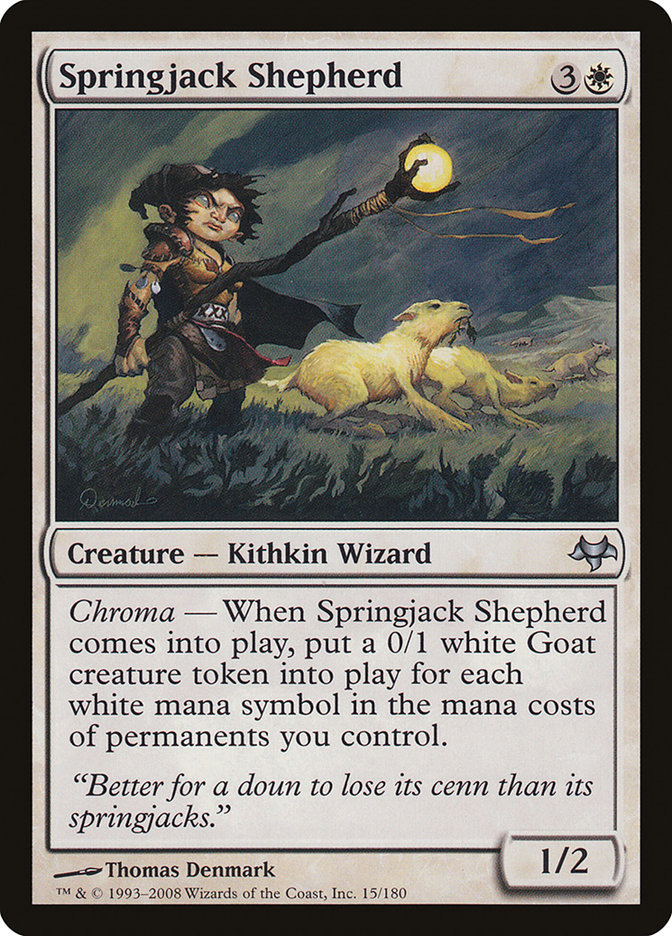
I remember hearing musings of a meme deck that used Springjack Shepherd as its win-con, though I don’t know how well it holds up or if it was ever anything more than a rogue deck. If you want boats of goats for your white deck, Shepherd can bring the flock, though we have Reverent Hoplite for that now.
Decklist: Mono-White Devotion in Casual Modern
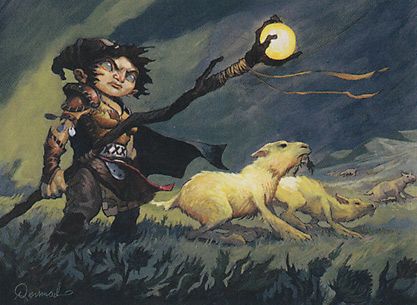
Springjack Shepherd | Illustration by Thomas Denmark
Creature (27)
Soul Warden x4
Soul's Attendant x4
Daxos, Blessed by the Sun x3
Voice of the Blessed x4
Auriok Champion x4
Springjack Shepherd x4
Reverent Hoplite x4
Instant (7)
Brave the Elements x3
Reprieve x2
Mana Tithe x2
Enchantment (4)
Intangible Virtue
Journey to Nowhere x2
Touch the Spirit Realm
Land (22)
Springjack Pasture x4
Plains x15
Eiganjo, Seat of the Empire
Idllyic Grange
Westvale Abbey / Ormendahl, Profane Prince
Don’t expect anything too competitive from a deck built around a chroma card. That said, I was able to whip up a shell that combines a typical “Soul Sisters” strategy with some mono-white devotion payoffs and slotted a playset of Springjack Shepherds in.
I tried to keep the deck as budget-friendly as possible, hence the lack of Solitude, Esper Sentinel, or whatever other cards you blame for ruining Modern. Let’s be real, you’re not spiking a big tournament with four Springjack Shepherds in your deck, so let’s not get carried away on the budget.
The gameplan’s pretty simple: Use you lifegain synergies to grow a large Voice of the Blessed, then put all those white pips to work fueling your late-game Springjack Shepherds and Reverent Hoplites. Disruptive permanents like Journey to Nowhere fuel devotion, Brave the Elements and Reprieve give you much-needed interaction, and a one-of Intangible Virtue pumps all your goats and human soldiers.
Since you’re experimenting with Springjack Shepherd, you might as well double up on the ba-a-a-a-d goat payoffs with Springjack Pasture. Filter that extra mana into Westvale Abbey and close out a game with the actual GOAT, Ormendahl, Profane Prince.
Wrap Up
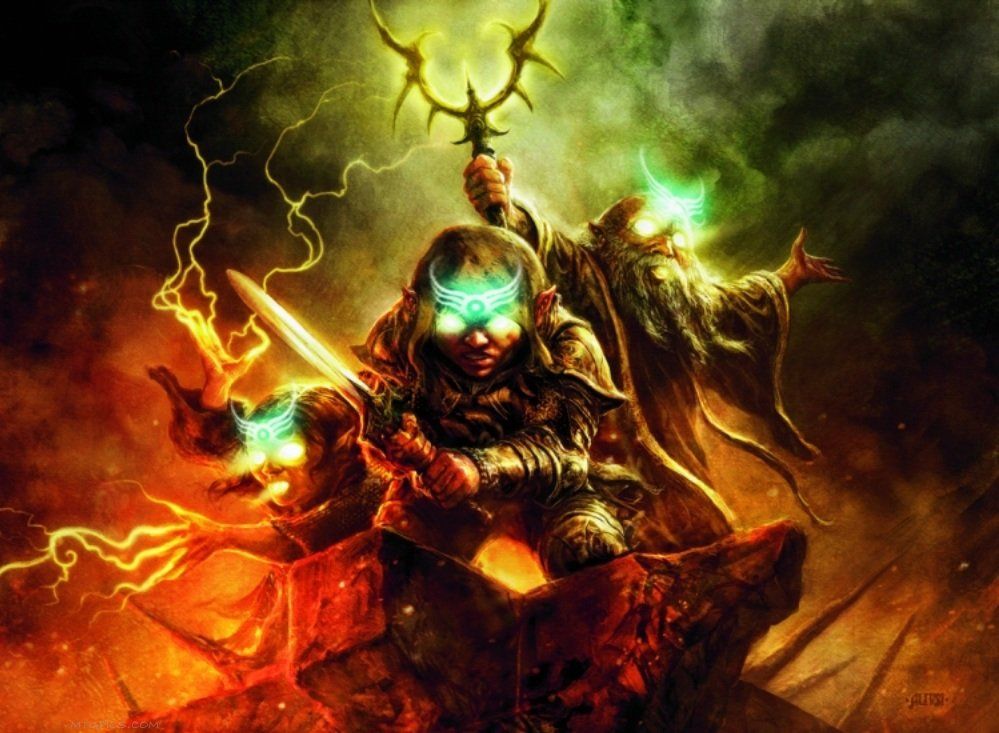
Light from Within | Illustration by Aleksi Briclot
And that’s the story of chroma. I was hoping for a little more “oomph” here, but I’m always happy to fill in some of the gaps in my backlog of Magic knowledge. Hopefully, you got something out of this too, though I think the real takeaway is how awesome devotion is.
I’d actually love to see chroma again in the future, though devotion makes that less likely. Chroma still has some functionality that devotion doesn’t, so here’s to hoping there’s a cool use of the mechanic down the line. At the very least it incentivizes you to change up deck construction to maximize the number of colored pips in the cost of your cards.
How are you all at home-a feeling about chroma? Do you have any positive (or dare I ask, negative) experiences with the mechanic? As someone who wasn’t playing Magic during the Lorwyn/Eventide years, I’d love to hear about it! Let me know in the comments below or over in the Draftsim Discord.
Thank you for making Draftsim your #1 stop for all things Magic!
Follow Draftsim for awesome articles and set updates:
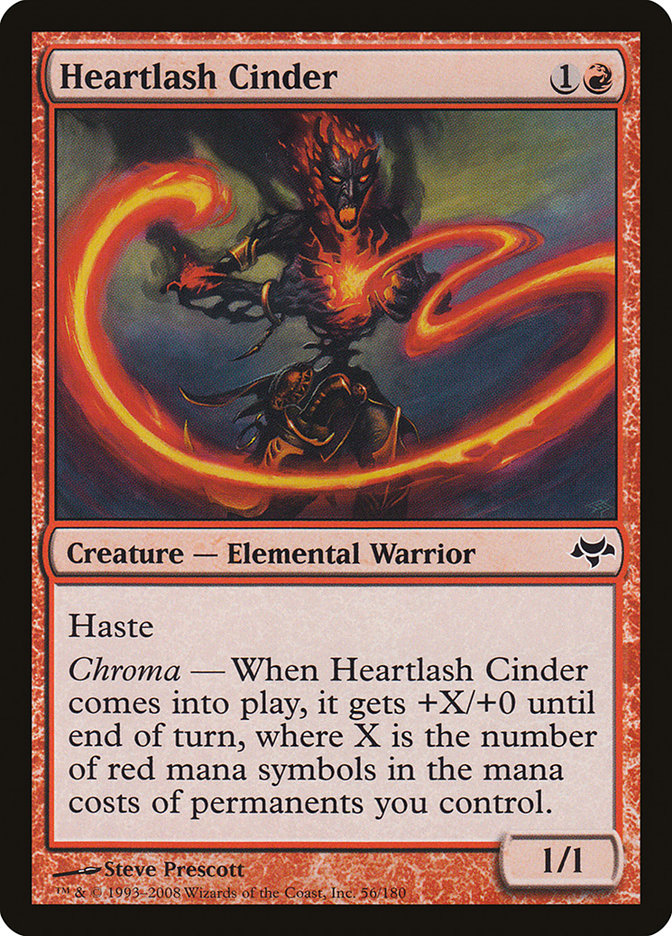
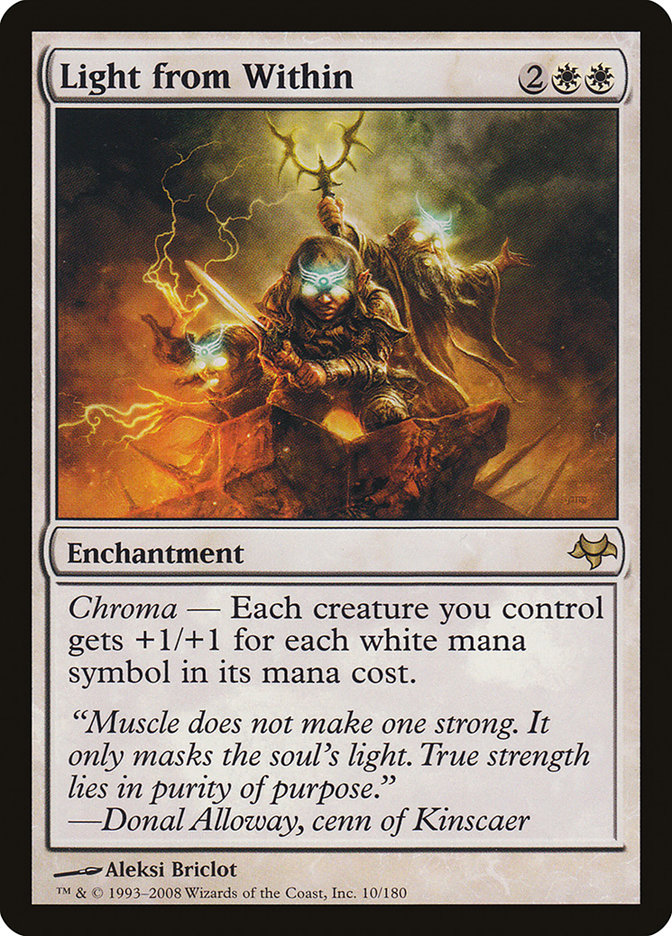

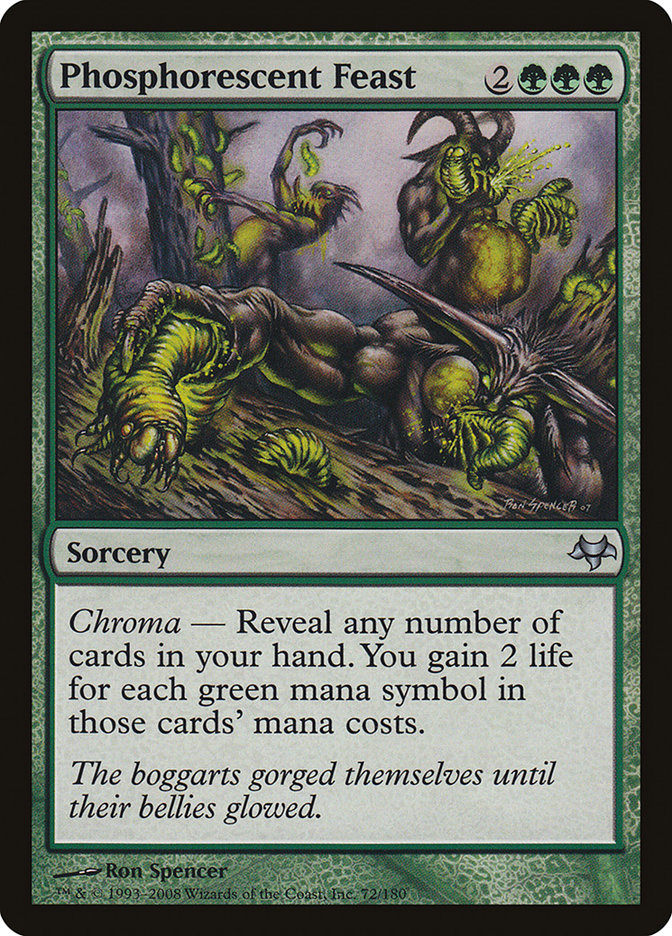
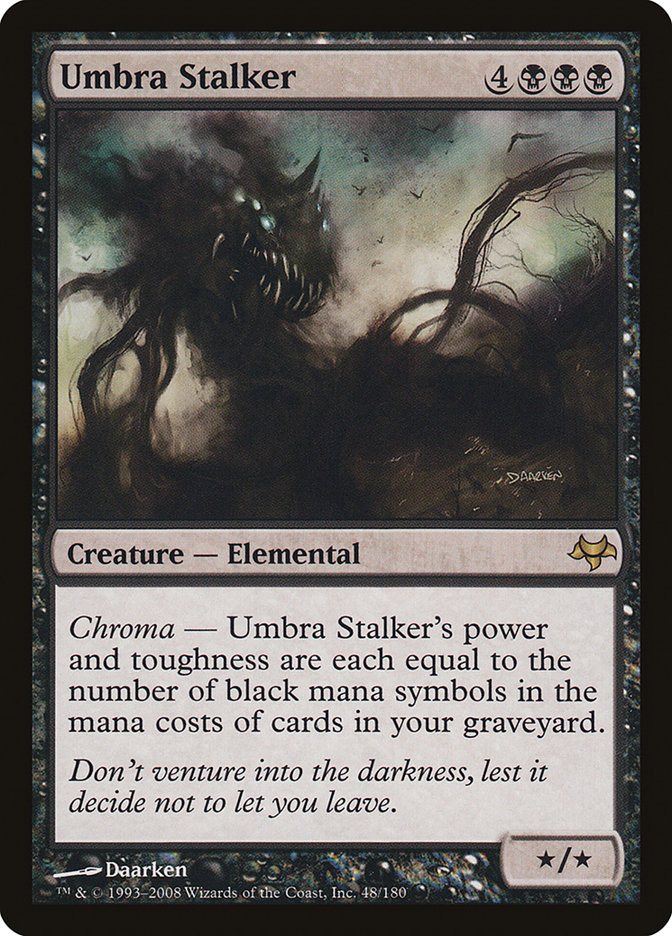


Add Comment